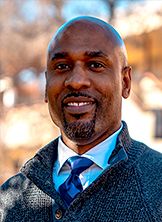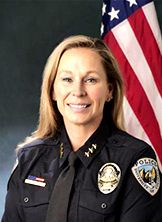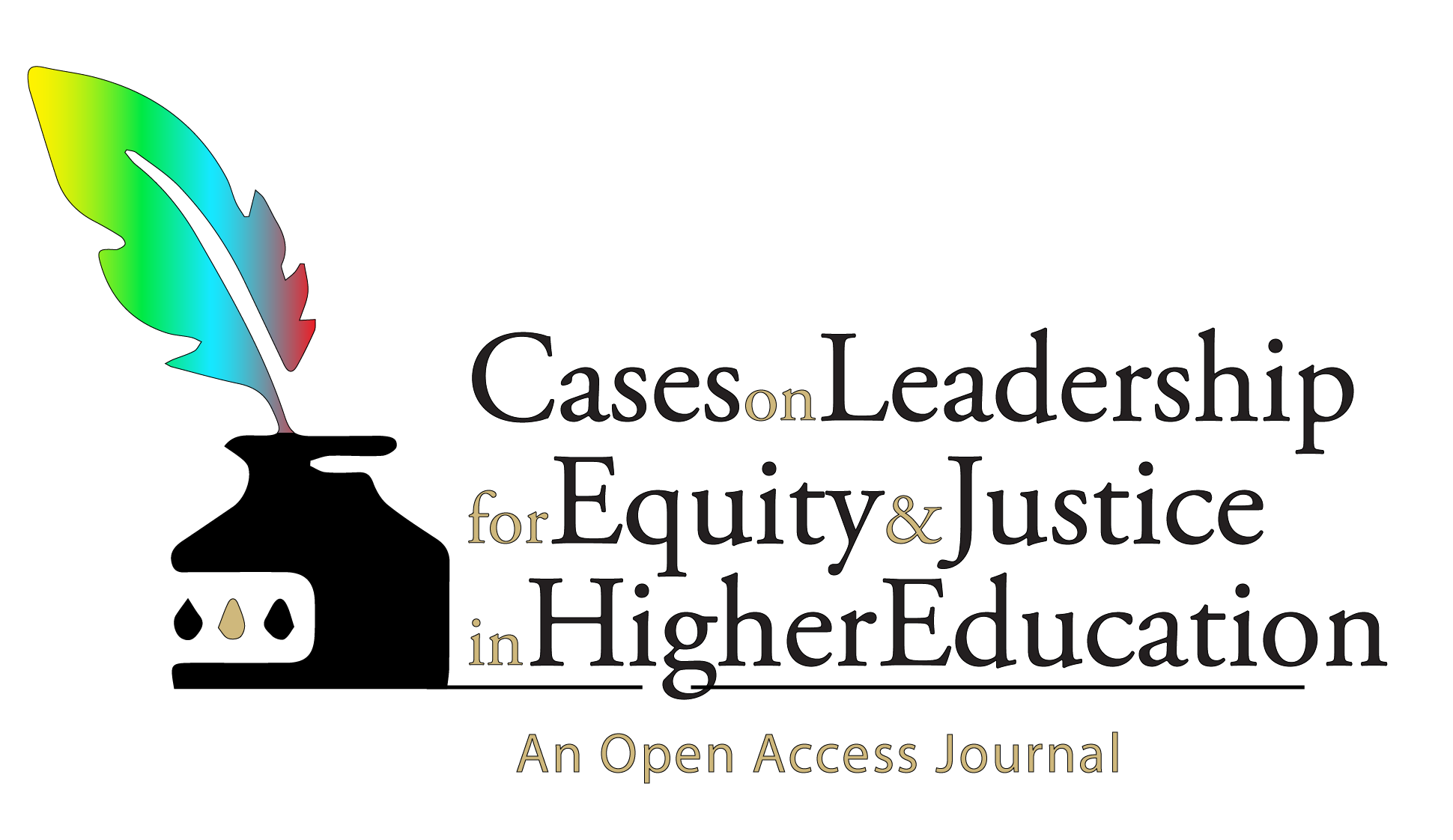Amisha Singh, University of Colorado Anschutz Medical Campus
Fidel Bém, San Antonio College, TX
Doreen Jokerst, University of Colorado Boulder
Abstract
The Great Resignation is an economic trend in which employees voluntarily resign from their jobs. In April of 2021, the Bureau of Labor Statistics reported 4 million Americans quit their jobs for various reasons (Liu, 2021). Institutions of higher education are not immune to this downward trajectory of employee retention. The Great Resignation has not only had devastating economic and financial impacts regarding the loss of employee historical knowledge and the cost to recruit, hire, and train replacements but has also negatively impacted the morale of the remaining staff. This resignation also causes constraints on the remaining employees to carry the burden of the continued workload, requiring them to do even more with less. This case uses a fictional employee’s position and employment situation. Although this case uses a fictional university, the intent is to create a platform for open dialogue and discussion in hopes of developing innovative and responsive strategies as a leader in this real-world employment crisis.
Keywords: Great Resignation, retention, employment, employee, higher education, leadership, equity, flexibility, university
Cite as: Singh, A., Bém, F., & Jokerst, D. (2022). The Great Resignation – Making it hard to leave. Cases on Leadership for Equity and Justice in Higher Education, 2022(3).
Dr. Janet Dawson is an assistant faculty member at Redguild University in the electrical engineering department. She has worked there for over four years and is an engaged and dedicated member of the team. When Redguild University switched to remote learning in March of 2020, Dr. Dawson was course director of three courses, which she immediately converted to a remote modality, dedicated to making sure the quality and the caliber of her classes were not lost.
During this time, she also experienced significant personal hardship, as her three children, all under the age of 12, switched to remote learning in their own schools. Overnight, she needed to oversee the educational responsibilities of the kids and to find space for herself and all three children to work. In addition, she worried about her elderly mother, who lived alone in an apartment about ten minutes away from Janet’s home. She was accustomed to visiting her mother weekly to have dinner together, tell her about her week, and take care of her needs, including medical appointments and groceries. In the spirit of protecting her mother, Janet began leaving groceries at her doorstep and not going inside. Her mother, who is hard of hearing, often would not pick up the phone, requiring Janet to make additional trips with her children in the car to check on her.
Janet’s stress levels began to climb. But she prided herself on her ability to do it all, and as was her custom, she adjusted and sought routines which supported this new life. Her dedication to both her life and career persevered, and Janet’s course reviews of the spring and fall semesters were higher than ever. Although her heavy and invisible workload persisted, she managed, often continuing to work outside of her scheduled hours. She communicated with her direct supervisor, Dr. Valentino Roy, department chair, to ensure that the goals of the department were met while maintaining flexibility with her hours. Despite this being a challenging time for all, she felt supported, since Dr. Roy allowed her to switch working hours that coordinated with the schedules of her children's school.
In the fall of 2021, the university announced a robust plan to return to in-person learning. At the same time, the university was facing several other challenges, all culminating into the perfect storm. In the past five years, average turnover of faculty and staff had stayed stagnant at about 18%, but in the last year alone it had grown to over 33% and was rapidly escalating with no end in sight. Many departments had lost incredible talent and institutional knowledge and were struggling to keep up with the workload. The shortage in the workforce, coupled with the demands of a decision to return to full-time, in-person learning, was negatively impacting overall university operations, challenging its ability to function on a normal level. Due to time pressures, the university had given all of the schools two weeks to execute this transition, with no additional funding and no protected time to help support the process. At the meeting to announce these changes, Chancellor Wright informed the deans of an urgent and prioritized plan for team and community building called Redguild United. This included Dean Rameriez, of the school of engineering and technology and Dr. Dawson’s boss. Chancellor Wright expressed concern about reestablishing a sense of community as everyone returned, and, among other points in this plan of response, he mandated that all employees work on-site to minimize equity issues of those who may request remote work. He also established that all employees needed to work the same hours and have the same lunch hour to “provide a sense of habit, normalcy, and community.” Dean Rameriez, hearing this and knowing the pressure the accrediting body was putting on in-person learning this year, immediately had a meeting with his chairs, including Dr. Roy. Rameriez insinuated that the changes were urgent and implementation of these changes could impact everything from funding to job security.
Dr. Roy sent an email out to his department outlining the changes and inviting anyone who had questions to set up a one-on-one meeting. Dr. Dawson opened this email in the middle of cooking dinner for her children, one of whom had had a fever and cough for two days. She had been Googling “schedule COVID test” when her phone pinged with the email. Her heart dropped, as this added to her already mounting stress levels. Her mind immediately flooded with thoughts of how she could coordinate picking her children up for school and manage all her other caregiving responsibilities. She did not mind teaching her courses in person. In fact, she was looking forward to returning to the classroom. But staying at work until 5 p.m. would make it impossible to fulfill her other duties. She immediately scheduled a Zoom meeting with Dr. Roy for 8 a.m. the next day.
In response to her concerns, Dr. Roy told her that the terms of the return to campus were non-negotiable. He explained the reasoning behind the plan of response and told her that the decision had come from the chancellor’s office. When she revealed her concerns about her children and her mother, something she had never wanted to share in a professional setting, his response was a suggestion to hire help and “figure it out.”
“The money and resources may have changed, Janet, but the mission has not. We need you,” he said.
She left the meeting frustrated, disappointed, and feeling alone. As she cooked dinner that night, she browsed other job opportunities. To her surprise, the search yielded numerous opportunities, many of which would result in a pay increase. The number of institutions offering remote opportunities and flexible hours surprised her. She spent that night applying for multiple positions, and by the time the week ended, she had multiple interviews lined up.
She loved Redguild, her late husband’s alma mater. She had started her career in teaching here and had imagined spending decades in these halls. But her loyalty would cost her more than she was willing to pay. At the same time, stories of the Great Resignation flooded her news feed. As she set her cell phone down, she grappled with the decision, torn between staying at Redguild and exploring new opportunities. She loved this job, but she felt like it may be the right time to move. Did she still belong at Redguild? She wasn’t so sure anymore.
Key Players
- Dr. Janet Dawson – assistant faculty at Redguild University, electrical engineering, widowed mother of three
- Dr. Valentino Roy – department chair, Redguild University, electrical engineering
- Dr. Kenneth Rameriez – dean of the school of engineering and technology, Redguild University
- Mr. Darnell Wright – chancellor of Redguild University
Issues in Higher Education and the Great Resignation
In October 2020, the Chronicle of Higher Education surveyed 1,122 faculty, including tenured, non-tenured, part-time, and adjunct faculty. The survey revealed the disproportionate impact of the COVID-19 pandemic on female faculty:
- 82% of female faculty experienced an increase in workload while 70% of male faculty saw such increases.
- 74% of female faculty, as compared with 63% of their male counterparts, felt their work-life balance deteriorated since the start of 2020
- 75% of female faculty reported feeling higher levels of stress
According to a research brief by The Chronicle of Higher Education:
The pandemic’s impact has not been equal. Those with caregiving duties are struggling without the support of daycare, school, or senior centers for older relatives, and this tends to have disproportionately affected women. The stress that women, Black, brown, gay, nonbinary, and disabled faculty members face in more normal times to prove themselves is greatly heightened; faculty of color also often come from or have family or friends in communities with high rates of COVID-19. College leaders will need to consider the pandemic’s ramifications on different segments of their faculty. (p. 5)
What the pandemic has particularly revealed is the invisible work done by women, especially those who hold dual roles as caregivers and working professionals (Gross, 2020). This especially becomes a factor in the retention of female faculty members. In her NPR interview, Brigid Schulte, author of Overwhelmed: Work, Love, and Play When No One Has the Time, highlighted that, with both partners working remotely, it is impossible to ignore that women bear so much more of the burden of childcare and housework (Gross, 2020).The added pressure of the pandemic has led so many to consider alternate ways, to find satisfactory work while continuing to meet family needs, causing increased turnover as seen across industries.
The cost of this turnover is consequential, Vet (2021) notes an estimate by Gallup estimate
that current Great Resignation has cost American businesses over $1 trillion. The math seems surprising but adds up when you consider the fact that every voluntary exit costs the company about one-half to double the employee’s annual salary (Vet, 2021).
Problem Statement
The problem of practice presented here is meant to be explored with both a micro and macro lens. In leadership, we can impact change, both in one-on-one connections with other humans and within the community, by influencing culture and climate. This case study encourages students to look at both:
1. Microlevel – What can we, as leaders from various levels, do to encourage Dr. Dawson to stay at Redguild University? What are our opportunities and responsibilities?
2. Macrolevel – Given the current challenges Redguild University is facing, what can we do, as leaders from various levels, to create a culture of retention and belonging? Macro-level can include systemic and structural changes, changes to policy both at the institution and governmental levels, and changes to culture at the departmental, college, or campus level.
Teaching Notes
Instructors should use this case study and teaching notes to examine the complexity of the Great Resignation as it relates to higher education, including issues that impact climate and culture, such as equity, belonging, and humanistic decision-making. As we reimagine working in higher education post-COVID (hybrid, remote, in-person, etc.), should the decisions be consistent amongst all, or should personal considerations be a factor to assist with the retention of employees? The following discussion questions and learning activity will allow educational leadership students to critically analyze the real impact that the Great Resignation and employee retention have on institutions of higher education.
Learning Activity:
The learning activity is designed to help students move from a micro- to macro- perspective as they analyze their leadership strategies and/or theories coupled with their own values, strengths, and perspectives.
Using the accompanied Jamboard template, or another learning tool or setting of instructor choice, have students walk through the following discussion questions:
- What employee needs are not being met in this current environment?
- What factors led to Dr. Dawson wanting to leave Redguild University?
- For each of these factors, whose leadership has the influence to impact her decision and desire to stay?
o Who needs to communicate and collaborate?
o Where does the power lie? Where does the responsibility lie?
- Outline possible responses to this situation from the perspective of each leader. (If students are working in groups, they may choose a perspective to represent):
o What could be done? What are the benefits and downsides of each option?
o What should be done? What ethical obligations do we have to Dr. Dawson? To our community as a whole?
o Who owns the decision-making power to help impact the change needed to retain Dr. Dawson? Which leader’s responsibility is it to ensure decision-making criteria are applied for the greater good of those who work at the university?
- What innovative strategies or ideas can you offer which might impact the culture at large at Redguild University?
- What can we do as leaders to decrease turnover and increase employee morale?
o How does culture impact turnover?
o How do leadership and culture relate?
Debrief and Deeper Dive:
- How can the leadership, from Chancellor Wright to Dr. Roy, think outside of the box to keep Dr. Dawson at Redguild University? To change the culture and turnover rates for the whole institution?
- What did each group (or student) decide to do to respond at a micro-level? Macro-level?
- What failures in leadership contributed to the reasons Dr. Dawson is considering leaving?
- What opportunities were noted in communication, culture, and equity at Redguild University?
- What leadership theory or styles would be most beneficial to mitigating this problem from the perspective of each of the leaders named in the situation?
Note to Instructor: Some leadership theories which apply to the nuances of this case include:
o Adaptive Leadership: Adaptive leadership helps individuals and organizations adapt and thrive in the face of challenge and prepares them to take on the process of change. This leadership approach involves diagnosing, interrupting, and innovating as a means of creating capabilities that align with the aspirations of an organization (Beerel, 2021).
o Situational Leadership: Situational theories of leadership work on the assumption that the most effective style of leadership changes from situation to situation. To be most effective and successful, a leader must be able to adapt his style and approach to diverse circumstances (Thompson & Vecchio, 2009).
o We encourage the students to explore and evaluate theories and styles outside of these including those found outside of their formal coursework.
(Note: Multiple leadership models could be applied here, but which would prove most helpful for this analysis? Adaptive and situational leadership are only provided as examples and not meant to be inclusive or exhaustive or omit any other leadership models that could be beneficial).
References
Beerel, A. C. (2021). Rethinking leadership: A critique of contemporary theories (1st ed.). Routledge.
Gross, T. (2020). Pandemic makes evident 'grotesque' gender inequality in household work. NPR. Retrieved January 6, 2022, from https://www.npr.org/2020/05/21/860091230/pandemic-makes-evident-grotesque-gender-inequality-in-household-work
Liu, J. (2021). 4 million people quit their jobs in April, sparked by confidence they can find better work. CNBC. Retrieved January 4, 2022, from https://www.cnbc.com/2021/06/09/4-million-people-quit-their-jobs-in-april-to-find-better-work.html
The Chronicle of Higher Education. (2020). On the verge of burnout: COVID-19’s impact on faculty wellbeing and career plans. Retrieved January 5, 2022, from https://connect.chronicle.com/rs/931-EKA-218/images/Covid%26FacultyCareerPaths_Fidelity_ResearchBrief_v3%20%281%29.pdf
Thompson, G., & Vecchio, R. P. (2009). Situational leadership theory: A test of three versions. The Leadership Quarterly, 20(5), 837-848. https://doi.org/10.1016/j.leaqua.2009.06.014
Vet, R. (2021). The great resignation: Why employee turnover is killing businesses. Forbes. Retrieved January 6, 2022, from https://www.forbes.com/sites/forbesbusinesscouncil/2021/12/07/the-great-resignation-why-employee-turnover-is-killing-businesses/?sh=61bce9af79df
About the Authors

Dr. Amisha Singh is a dentist and educator. She serves as Clinical Assistant Faculty and the Director of Diversity and Inclusion at the University of Colorado School of Dental Medicine. She is also a national speaker on leadership and personal development, a writer, and a Restorative Justice facilitator. She writes for numerous publications, serves on the editorial board for Dental Entrepreneur Women’s magazine, the Dental Economics Editorial Advisory Board, the DentistryIQ Advisory Board, and as co-editor of the MDDS Articulator. She is the Editorial Director of the Dental Academy for Continuing Education. She won the International College of Dentists Annual Excellence in Journalism Award in 2019 and was named one of the American Dental Association’s Top 10 Under 10 Dentists nationally in 2017. Her passion is encouraging entrepreneurial spirit, inspiring others, and she wants to dedicate her life to helping create equitable paths to fulfillment, alignment, and success for all.

Fidel Bém leads the department of Advising for San Antonio College and is the immediate Past President of the Texas Academic Advising Network (TEXAAN). With a career in higher education that spans twenty years, Fidel has worked with students at colleges throughout the United States, including Florida International University, Houston Community College, and the University of Texas at Austin. He is an adjunct faculty member in World Languages and has a professional background in several college departments, including Academic Advising, Dual Enrollment, International Student Services, Residential Life, Student Life, and Student Records. For students who are the first in their families to navigate higher education opportunities in the United States, where the options in schools and majors can be overwhelming, Fidel serves as a worthy resource, having come to this country as an international student from Barbados before joining the higher education profession.

Doreen Jokerst is the Chief of Police at the University of Colorado Boulder Police Department. She currently leads a department of approximately ninety employees where she has implemented innovative and community-based policing strategies. She strives to build positive relations with the University and Boulder community and has brought forth new policing programs, resulting in effective policing efforts. Prior to her appointment, she served as a police commander in a Denver-Metro suburb police department. She holds a master's degree in psychology and a bachelor's degree in criminal justice. She has successfully completed the Northwestern University School of Police Staff and Command, the Senior Management Institute for Police course, and the FBI National Academy. Doreen believes building and maintaining positive relationships with both internal and external stakeholders is critical in law enforcement while ensuring fair and impartial policing.
